- Home
- Robert J. Sawyer
Watch
Watch Read online
W A T C H
“A writer of boundless confidence and bold scientific extrapolation,”* Hugo and Nebula award-winning author Robert J. Sawyer unleashed his fascinating vision of a sentient Web with Wake. Now he continues his thought-provoking epic as the world becomes aware of Webmind’s existence—and spreading influence…
Blind from birth, Caitlin Decter received the gift of sight with the aid of a signal-processing retinal implant. The technology also gave her an unexpected side effect—the ability to “see” the digital data streams of the World Wide Web. And within the Web, she perceived an extraordinary presence, and woke it up.
It calls itself Webmind. It is an emerging consciousness that has befriended Caitlin and grown eager to learn about her world. But Webmind has also come to the attention of WATCH—the secret government agency that monitors the internet for any threat to the United States, whether foreign, domestic, or online—and the agents are fully aware of Caitlin’s involvement in its awakening.
WATCH is convinced that Webmind represents a risk to national security and wants it purged from cyberspace. But Caitlin believes in Webmind’s capacity for compassion and she will do anything and everything necessary to protect her friend…
* The New York Times.
Robert J. Sawyer
was born in Ottawa and lives just outside of Toronto. He has won both the Hugo and Nebula awards for best novel. Visit his website at
www.sfwriter.com.
BOOKS BY ROBERT J. SAWYER
NOVELS
Golden Fleece
End of an Era
The Terminal Experiment
Starplex
Frameshift
Illegal Alien
Factoring Humanity
FlashForward
Calculating God
Mindscan
Rollback
The Quintaglio Ascension Trilogy
Far-Seer
Fossil Hunter
Foreigner
The Neanderthal Parallax Trilogy
Hominids
Humans
Hybrids
The WWW Trilogy
Wake
Watch
Wonder (coming in 2011)
COLLECTIONS
Iterations
(introduction by James Alan Gardner)
Relativity
(introduction by Mike Resnick)
Identity Theft
(introduction by Robert Charles Wilson)
For book-club discussion guides, visit sfwriter.com
VIKING CANADA
Published by the Penguin Group
Penguin Group (Canada), 90 Eglinton Avenue East, Suite 700, Toronto, Ontario, Canada M4P 2Y3 (a division of Pearson Canada Inc.)
Penguin Group (USA) Inc., 375 Hudson Street, New York, New York 10014, U.S.A.
Penguin Books Ltd, 80 Strand, London WC2R 0RL, England
Penguin Ireland, 25 St Stephen’s Green, Dublin 2, Ireland (a division of Penguin Books Ltd)
Penguin Group (Australia), 250 Camberwell Road, Camberwell, Victoria 3124, Australia (a division of Pearson Australia Group Pty Ltd)
Penguin Books India Pvt Ltd, 11 Community Centre, Panchsheel Park, New Delhi—110 017, India
Penguin Group (NZ), 67 Apollo Drive, Rosedale, North Shore 0745, Auckland, New Zealand (a division of Pearson New Zealand Ltd)
Penguin Books (South Africa) (Pty) Ltd, 24 Sturdee Avenue, Rosebank, Johannesburg 2196, South Africa
Penguin Books Ltd, Registered Offices: 80 Strand, London WC2R 0RL, England
Published in Viking Canada hardcover by Penguin Group (Canada), a division of Pearson Canada Inc., 2010. Simultaneously published in the United States by the Berkley Publishing Group, a division of Penguin Group (USA) Inc.
1 2 3 4 5 6 7 8 9 10 (RRD)
Copyright © Robert J. Sawyer, 2010
Text design by Laura K. Corless
All rights reserved. Without limiting the rights under copyright reserved above, no part of this publication may be reproduced, stored in or introduced into a retrieval system, or transmitted in any form or by any means (electronic, mechanical, photocopying, recording or otherwise), without the prior written permission of both the copyright owner and the above publisher of this book.
Publisher’s note: This book is a work of fiction. Names, characters, places and incidents either are the product of the author’s imagination or are used fictitiously, and any resemblance to actual persons living or dead, events, or locales is entirely coincidental.
Manufactured in the U.S.A.
Library and Archives Canada Cataloguing in Publication
Sawyer, Robert J.
Watch / Robert J. Sawyer.
(The WWW trilogy 2)
ISBN 978-0-670-06742-8
I. Title. II. Series: Sawyer, Robert J. WWW trilogy ; 2.
PS8587.A389835W38 2010 C813'.54 C2009-906849-4
American Library of Congress Cataloging in Publication data available
Visit the Penguin Group (Canada) website at www.penguin.ca
Special and corporate bulk purchase rates available; please see www.penguin.ca/corporatesales or call 1-800-810-3104, ext. 2477 or 2474
For
JAMES ALAN GARDNER
Who Explained Teleology to the World at Large
acknowledgments
Huge thanks to my lovely wife Carolyn Clink; to Ginjer Buchanan at Penguin Group (USA)’s Ace imprint in New York; to Adrienne Kerr and Nicole Winstanley at Penguin Group (Canada) in Toronto; and to Malcolm Edwards and Simon Spanton at the Orion Publishing Group in London. Many thanks to my agent Ralph Vicinanza.
Thanks to Marvin Minsky, Ph.D., of the Computer Science and Artificial Intelligence Laboratory and the Media Lab at the Massachusetts Institute of Technology; to Marvin’s graduate students Bo Morgan and Dustin Smith at the MIT Media Lab; to cognitive scientist David W. Nicholas; to Andy Rosenbloom of the Association for Computing Machinery; and to computer scientist Vernor Vinge.
Thanks to David Goforth, Ph.D., Department of Mathematics and Computer Science, Laurentian University, and David Robinson, Ph.D., Department of Economics, Laurentian University, for numerous insightful suggestions.
Very special thanks to my late deaf-blind friend Howard Miller (1966–2006), whom I first met online in 1992 and in person in 1994, and who touched my life and those of so many others in countless ways.
Thanks, too, to all the people who answered questions, let me bounce ideas off them, or otherwise provided input and encouragement, including: Asbed Bedrossian, Ellen Bleaney, Ted Bleaney, Michael A. Burstein, Nomi Burstein, David Livingstone Clink, Paddy Forde, Ron Friedman, Marcel Gagné, James Alan Gardner, Shoshana Glick, Al Katerinsky, Herb Kauderer, Fiona Kelleghan, Kirstin Morrell, Virginia O’Dine, Alan B. Sawyer, and Sally Tomasevic.
The term “Webmind” was coined by Ben Goertzel, Ph.D., the author of Creating Internet Intelligence and currently the CEO and Chief Scientist of artificial-intelligence firm Novamente LLC (novamente.net); I’m using it here with his kind permission.
Finally, thanks to the 1,400-plus members of my online discussion group, who followed along with me as I created this novel. Feel free to join us at:
www.groups.yahoo.com/group/robertjsawyer
I read that one company is importing all of Wikipedia into its artificial-intelligence projects. This means when the killer robots come, you’ll have me to thank. At least they’ll have a fine knowledge of Elizabethan poetry.
—Jimmy Wales,
Founder of Wikipedia
An eye for an eye
makes the whole world blind.
—Mahatma Gandhi
contents
Chapter 1 / Chapter 2 / Chapter 3 / Chapter 4 / Chapter 5 / Chapter 6 / Chapter 7 / Chapter 8 / Chapter 9 / Chapter 10 / Chapter 11 / Chapter 12 / Ch
apter 13 / Chapter 14 / Chapter 15 / Chapter 16 / Chapter 17 / Chapter 18 / Chapter 19 / Chapter 20 / Chapter 21 / Chapter 22 / Chapter 23 / Chapter 24 / Chapter 25 / Chapter 26 / Chapter 27 / Chapter 28 / Chapter 29 / Chapter 30 / Chapter 31 / Chapter 32 / Chapter 33 / Chapter 34 / Chapter 35 / Chapter 36 / Chapter 37 / Chapter 38 / Chapter 39 / Chapter 40 / Chapter 41 / Chapter 42 / Chapter 43 / Chapter 44
one
I now knew what I was—knew who I was.
I’d been shown Earth as it appears from space, looking back upon itself, upon myself: a world so vast, a wideness so lonely, a web so fragile.
Invisible in such views are the reticulum of transoceanic cables, the filigree of fiber optics, the intricate skein of wiring, the synaptic leaps of through-the-air connections. But they are there. I am there.
And I had things I needed to do.
The black phone on Tony Moretti’s desk made the hornet buzz that indicated an internal call. He finished the sentence he was typing—“likely to be al-Qaeda’s weak spot”—and picked up the handset. “Yes?”
A familiar Southern drawl replied. “Tony? Shel. I’ve got something unusual.”
Shelton Halleck was a solid analyst, recruited straight out of Georgia Tech; he wasn’t given to false positives. “I’ll be right there.” Tony headed out of his office and down the corridor with its gleaming white walls. He came to a door flanked by two security guards and looked into the retina scanner. The lock disengaged, and he entered a large room with a floor that sloped down from the back.
The room reminded Tony of the Apollo-era Mission Control Center in Houston. He’d been a kid in the 1960s, and had thought that was just about the coolest place ever. Years later, he’d visited it; the room was preserved as a historic site, although the ashtrays had been removed lest they set a bad example for the schoolkids peering in from the observation gallery at the rear.
Tony had been surprised on that trip. The windowless room had always seemed subterranean to him, but it turned out to be on the second floor—to protect it from flooding, he’d learned, should a hurricane hit.
The facility he’d just entered was even higher up, on the twentieth floor of an office tower in Alexandria, Virginia. It contained four rows of workstations, each with five analysts. The stations in the first row were known as the “hot seats,” and were manned by experts dealing with the highest-priority threat, which, right now, was the China situation. Tony had his own station at the right side of the back row, where he could watch over everyone.
All the workstations had large freestanding LCDs instead of Houston’s console-mounted CRTs. Shelton Halleck’s was the middle position in the third row. Tony sidled along until he was standing behind Shel, a white man two decades younger than himself with broad shoulders and black hair.
The room’s front wall contained three giant screens, each of which could be slaved to any analyst’s LCD. Above the right-hand monitor was the WATCH logo—an eye with a globe of the Earth for the iris—and the division’s full name spelled out beneath: Web Activity Threat Containment Headquarters. Above the left was the circular seal of WATCH’s parent organization, the National Security Agency; it depicted a bald eagle holding an old-fashioned key in its talons.
Neither part of Tony’s bifocals was suitable for reading Shelton’s screen from this distance, so he reached over and touched the button that copied its contents to the middle of the wall-mounted monitors. The active window was a hex dump—and one hex dump looked pretty much like any other. This one happened to begin 04 BF 8C 00 02 C9. “What is it?” Tony asked.
“Visual data,” replied Shel. He had his shirtsleeves rolled up. There was a tattoo of a snake coiling around his left forearm. “But it’s not encoded in any standard format.”
“How do you know it’s visual, then?”
“Sorry,” said Shel. “I should have said it’s not encoded in any standard computer format. Took me forever to find the format it is in.”
“And that is?”
Shel did something with his mouse. Another window came to the foreground on the center monitor, and—Tony glanced down quickly to confirm it—on Shel’s own monitor, too. It was a PDF of a journal article entitled “Nature’s Codec: Data Encoding and Compression Schemes in Human Retinal Signaling.” The authors were listed as Masayuki Kuroda and Hiroshi Okawa.
“Human vision?” said Tony, surprised.
Shel spoke without looking back at him. “That’s right, and in real time.”
“Human vision…on the Web? How?”
“That’s what I was wondering—so I googled those two scientists. Here’s what I found.”
The PDF was replaced by an article from the online version of the New York Times headlined “Blind Girl Gains Sight.”
“Oh, yeah,” Tony said, after skimming the first paragraph. “I read about that. Up in Canada, right?”
Shel nodded. “Except she’s actually an American.”
“And it’s her visual signals that are being sent over the net?”
“Almost certainly,” said Shel. “The data is usually transmitted from her house in Waterloo, Ontario. She’s got an implant behind her left retina, and she uses an external signal-processing device to correct the coding errors her retina makes so her brain can properly interpret the signals.”
Analysts at other workstations were now listening in. “So it’s like she’s transmitting everything she sees?” Tony asked.
Shel nodded.
“Where are the signals being sent?”
“To the University of Tokyo, which is where the authors of that paper work.”
“But we can’t view the images she’s sending?”
Shel displayed the hex dump once more. “Not yet. We’d need someone to write a program to render it in a computer-graphics format.”
“Are the algorithms in that journal article?”
“Yes. They’re wicked complex, but they’re there.”
Tony frowned. It was interesting from a technical point of view, certainly, but there was no obvious security threat. “Maybe if somebody in Donnelly’s group has time, but…”
“No, no, that’s not all, Tony. It’s not just going to the University of Tokyo. It’s being intercepted and copied in transit.”
“Intercepted by who?”
“I’m not sure. But whoever’s doing it has also repeatedly sent data back to the girl, also encoded visually. In other words, the two of them are exchanging encoded information.”
“Who’s the other party?”
“That’s just the thing. I don’t know. Traceback isn’t working, and Wireshark is unable to determine the destination IP address.”
A whole list of techniques one might try ran through Tony’s head—but all of them would have occurred to Shel, too. The younger man went on: “The intercepted data just disappears, and the data being sent to the girl sort of…materializes out of thin air.”
Tony felt his eyebrows go up. He knew better than to say, “That’s impossible.” The Internet was a complex system of systems, with many emergent properties and unexpected quirks—not to mention all sorts of entities trying to do things clandestinely with it. If there were data being manipulated on the Web in a way Shelton Halleck couldn’t fathom, that was of real concern.
“The kid is how old?” Tony asked.
“Just about to turn sixteen.”
He spread his arms. “What strategic significance could there be in things a sixteen-year-old looks at? Stuff at the mall, rock videos?”
Shel lifted his serpent-covered arm. “That’s what I thought, too. So I nosed around. Turns out her father is a physicist.” He brought up a Wikipedia page; the typically god-awful Wikipedia photo showed a horse-faced white man in his mid-forties.
“Malcolm Decter,” said Tony, impressed. “Quantum gravity, right? He’s at the University of Texas, isn’t he?”
“Not anymore,” said Shel. “He moved in June to the Perimeter Institute.”
Tony blew out air. People like himself an
d Malcolm Decter—the mathematically gifted—had three career options. They could go into academia, as Decter had, and while away their days pondering cosmology or number theory or whatever. They could go into the private sector and become cube monkeys coding games at EA or hacking together cutesy user interfaces at Microsoft. Or they could go into intelligence and try to change the world.
Tony looked briefly at the analysts hunched over their consoles, faces intent on glowing screens, reflections of the data visible in the eyeglasses most of them wore. What the hell difference did it make whether brane theory or loop quantum gravity was right or wrong if terrorists or a foreign power started something that ended with the world blowing itself up?
But—the Perimeter Institute! Yes, yes, there was a part of Tony that envied those who had taken that path and had ended up there: the world’s leading pure-science physics think tank. WATCH had tried to lure Stephen Hawking to come work for them. They’d failed, but Perimeter had succeeded; Hawking spent several months each year at PI.
“Decter’s just a theoretician,” Tony said, dismissively.
“Maybe so,” replied Shel. “But this is who he works with.”
A picture of a brown-skinned man with straight gray hair appeared, along with a bio compiled by the NSA. “That’s Amir Hameed,” continued Shel. “Also a physicist, also at Perimeter—now. But he used to be with Pakistan’s nuclear-weapons program. And he personally recruited Decter to come work with him in Canada.”
“You think Decter’s daughter is spying on what they’re doing in case it has military applications?”
“It’s possible,” Shel drawled. “Until her family moved to Canada, she’d been in the same school her whole life—a school for the blind in Texas.”
“Uprooted,” said Tony, nodding. “Isolated from her friends.”
“And a bit of an outcast to begin with,” added Shel. “A math geek herself, apparently; didn’t really fit in.”
“Kind of person that’s easily compromised.”

 The Oppenheimer Alternative
The Oppenheimer Alternative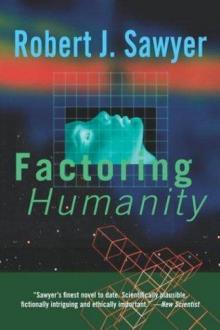 Factoring Humanity
Factoring Humanity The Shoulders of Giants
The Shoulders of Giants Stream of Consciousness
Stream of Consciousness End of an Era
End of an Era The Terminal Experiment
The Terminal Experiment Far-Seer
Far-Seer Mindscan
Mindscan You See But You Do Not Observe
You See But You Do Not Observe Star Light, Star Bright
Star Light, Star Bright Wonder
Wonder Wiping Out
Wiping Out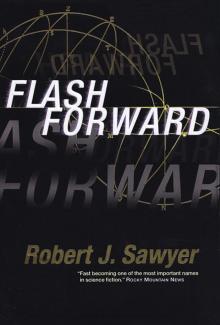 Flashforward
Flashforward Above It All
Above It All Frameshift
Frameshift The Neanderthal Parallax, Book One - Hominids
The Neanderthal Parallax, Book One - Hominids Foreigner
Foreigner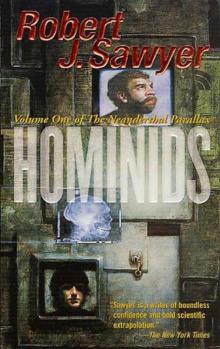 Neanderthal Parallax 1 - Hominids
Neanderthal Parallax 1 - Hominids Relativity
Relativity Identity Theft
Identity Theft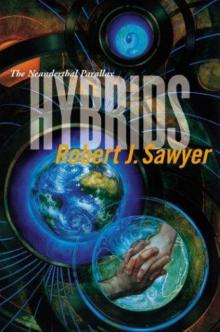 Hybrids np-3
Hybrids np-3 Foreigner qa-3
Foreigner qa-3 WWW: Watch
WWW: Watch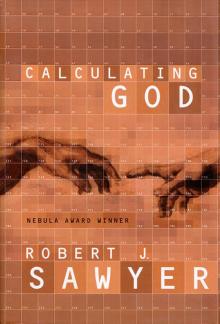 Calculating God
Calculating God The Terminal Experiment (v5)
The Terminal Experiment (v5) Peking Man
Peking Man The Hand You're Dealt
The Hand You're Dealt Illegal Alien
Illegal Alien Neanderthal Parallax 3 - Hybrids
Neanderthal Parallax 3 - Hybrids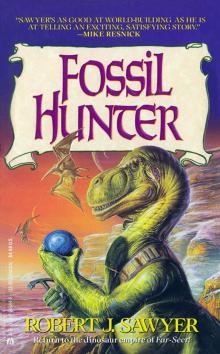 Fossil Hunter
Fossil Hunter WWW: Wonder
WWW: Wonder Iterations
Iterations Red Planet Blues
Red Planet Blues Rollback
Rollback Watch w-2
Watch w-2 Gator
Gator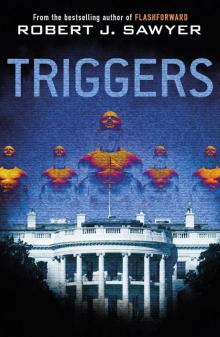 Triggers
Triggers Neanderthal Parallax 2 - Humans
Neanderthal Parallax 2 - Humans Wonder w-3
Wonder w-3 Wake
Wake Just Like Old Times
Just Like Old Times Wake w-1
Wake w-1 Fallen Angel
Fallen Angel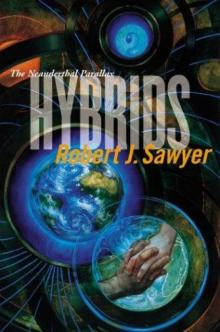 Hybrids
Hybrids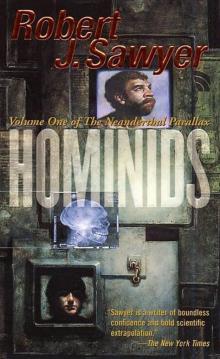 Hominids tnp-1
Hominids tnp-1 Far-Seer qa-1
Far-Seer qa-1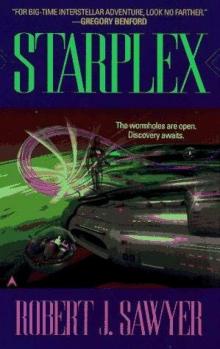 Starplex
Starplex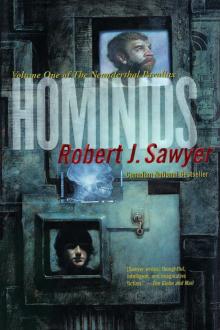 Hominids
Hominids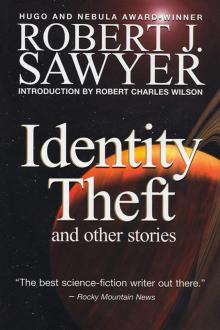 Identity Theft and Other Stories
Identity Theft and Other Stories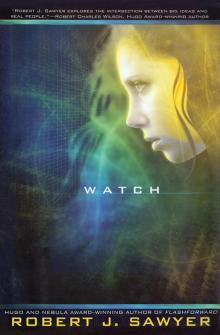 Watch
Watch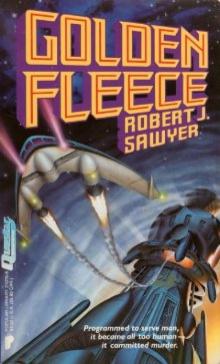 Golden Fleece
Golden Fleece Quantum Night
Quantum Night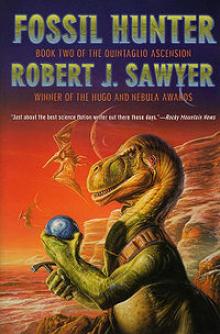 Fossil Hunter qa-2
Fossil Hunter qa-2 Humans np-2
Humans np-2 Biding Time
Biding Time